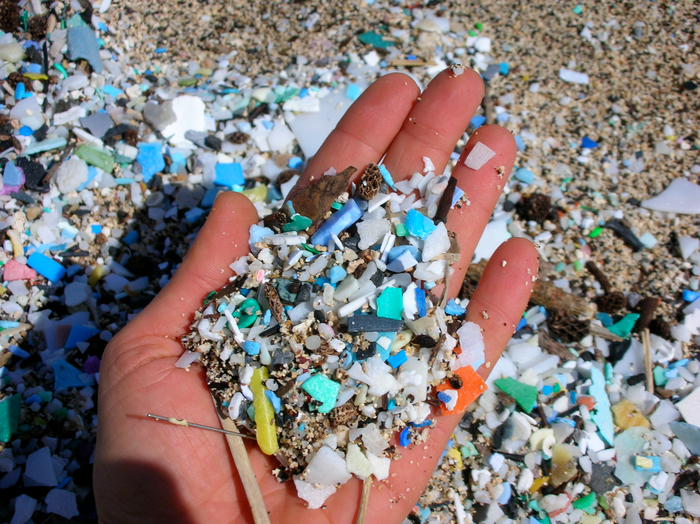According to recent research carried out by Marcus Eriksen of the 5 Gyres Institute, USA, and co-workers, a worldwide dataset of ocean plastic pollution between 1979 and 2019 discloses a rapid and widespread upsurge in ocean plastics since 2005. The study was published on March 8th, 2023, in the open-access journal PLOS ONE.
 A handful of microplastics washed ashore at Kamilo Beach, Hawaii. Image Credit: The 5 Gyres Institute, CC-BY 4.0
A handful of microplastics washed ashore at Kamilo Beach, Hawaii. Image Credit: The 5 Gyres Institute, CC-BY 4.0
Comprehending the accumulation of plastic in the oceans to date could provide a pivotal baseline for addressing this type of pollution. Earlier research has mainly focused on northern-hemisphere oceans near the world’s most industrialized nations, while other investigations have discovered a sharp increase in ocean plastic over shorter periods.
Eriksen and co-workers examined data on ocean-surface-level plastic pollution gathered from 11,777 stations across six marine regions (North Pacific, South Pacific, North Atlantic, South Atlantic, Indian, and Mediterranean) between 1979 and 2019.
After accounting for site selection, wind, and under-sampling biases, the investigators’ model revealed a considerable and rapid rise in the worldwide ocean distribution and abundance of plastics in the ocean surface layer since 2005.
In 2019, an expected 82–358 trillion plastic particles (mean = 171 trillion plastic particles, predominantly microplastics) weighing 1.1–4.9 million tons (mean = 2.3 million tons) were at sea. A lack of data from 1979 to 1990 hindered trend analysis, while between 1990 and 2004, plastic levels fluctuated with no observable trend.
Even though most of the data was gathered in the North Atlantic and the North Pacific, Eriksen and fellow researchers believe that the rapid increase since 2005 represents global growth in plastic production or changes in waste generation and management.
Without widespread policy changes, scientists predict that the rate at which plastics enter the waters will more than double by 2040. They demand immediate, legally binding international policy intervention to reduce the social, ecological, and economic damage caused by aquatic plastic pollution.
We've found an alarming trend of exponential growth of microplastics in the global ocean since the millennium, reaching over 170 trillion plastic particles. This is a stark warning that we must act now at a global scale. We need a strong, legally binding UN Global Treaty on plastic pollution that stops the problem at the source.
Marcus Eriksen, Co-Founder and Researcher, 5 Gyres Institute
Journal Reference:
Eriksen, M., et al. (2023) A growing plastic smog, now estimated to be over 170 trillion plastic particles afloat in the world’s oceans—Urgent solutions required. PLoS ONE. doi.org/10.1371/journal.pone.0281596.